Related Research Articles

Emanuel Gottlieb Leutze was a Kingdom of Württemberg-born American history painter best known for his 1851 painting Washington Crossing the Delaware. He is associated with the Düsseldorf school of painting.

John Singer Sargent was an American expatriate artist, considered the "leading portrait painter of his generation" for his evocations of Edwardian-era luxury. He created roughly 900 oil paintings and more than 2,000 watercolors, as well as countless sketches and charcoal drawings. His oeuvre documents worldwide travel, from Venice to the Tyrol, Corfu, Spain, the Middle East, Montana, Maine, and Florida.

Robert Koehler was a German-born painter and art teacher who spent most of his career in the United States.

John La Farge was an American artist whose career spanned illustration, murals, interior design, painting, and popular books on his Asian travels and other art-related topics. La Farge made stained glass windows, mainly for churches on the American east coast, beginning with a large commission for Henry Hobson Richardson's Trinity Church in Boston in 1878, and continuing for thirty years. La Farge designed stained glass as an artist, as a specialist in color, and as a technical innovator, holding a patent granted in 1880 for superimposing panes of glass. That patent would be key in his dispute with contemporary and rival Louis Comfort Tiffany.
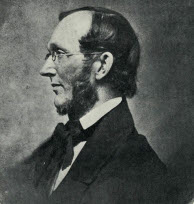
Francis Bowen was an American philosopher, writer, and educationalist.

John Bach McMaster was an American historian.
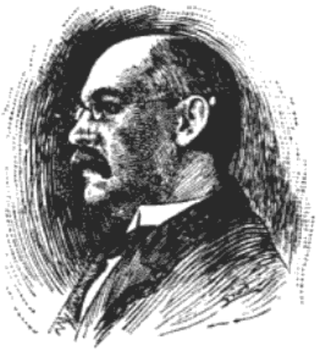
Robert Crannell Minor (1839–1904), American artist, was born in New York City on April 30, 1839. His father, Israel Minor, was a merchant who made a large fortune in the pharmaceutical business. As a young man, Robert Minor worked as a bookkeeper in New York City but decided to study art in his early thirties. After studying in New York with painter Alfred Cornelius Howland, Minor went abroad in 1871 to continue his artistic education. He visited various galleries in England before traveling to Barbizon, France, where he studied under Diaz. He later studied in Antwerp under Joseph Van Luppen and Hippolyte Boulenger. In 1874, he was vice president of the Société artistique et littéraire of Antwerp.
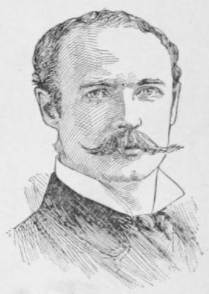
Frederick Dielman was a German-American portrait and figure painter.
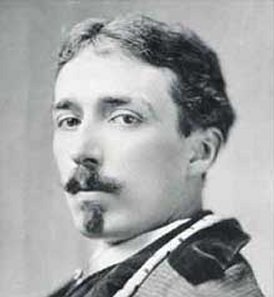
James Carroll Beckwith was an American landscape, portrait and genre painter whose Naturalist style led to his recognition in the late nineteenth and very early twentieth century as a respected figure in American art.

William Page was an American painter and portrait artist.

Bela Lyon Pratt was an American sculptor from Connecticut.

Peter Parker was an American physician and a missionary who introduced Western medical techniques into Qing dynasty China, at the city of Canton. It was said that Parker "opened China to the gospel at the point of a lancet."
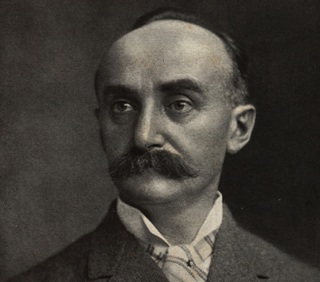
Angelo Heilprin was an American geologist, paleontologist, naturalist, and explorer.
Jacques Reich was a Hungarian portrait etcher, active mainly in the United States.

Alfred Jacob Miller was an American artist best known for his paintings of trappers and Native Americans in the fur trade of the western United States. He also painted numerous portraits and genre paintings in and around Baltimore during the mid-nineteenth century.

Arnold Hague was a United States geologist who did many geological surveys in the U.S., of which the best known was that for Yellowstone National Park. He also had assignments in China and Guatemala. He became a member of the United States Geological Survey in 1879 when it was first organized.
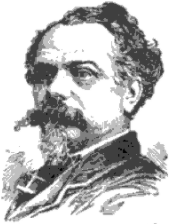
Carl Ludwig Brandt was an artist born near Hamburg who worked mostly in the United States.

Max Rosenthal was a Polish-American painter, lithographer, draftsman and etcher.

Carl Gutherz was a painter, part of the Symbolist movement in the United States during the 19th century.

Constant Mayer was a French painter who emigrated to the United States.
References
- This article incorporates text from a publication now in the public domain : Wilson, J. G.; Fiske, J., eds. (1900). . Appletons' Cyclopædia of American Biography . New York: D. Appleton.
- "German Heritage Corner: Niemeyer, John Henry (1839-1932)". germanheritage.com. Retrieved 31 January 2012.